Today Stages (finally) announced their long seen but never sold dual left/right power meter, the Stages LR. This new system simply adds in right-side measurement to what has long been Stages left-leg only product line.
Of course, long-time power meter followers know that this isn’t a product out of thin air. In fact, it’s been running Team Sky bikes for a number of years, all in the public eye. You’ve seen it in numerous posts here since early 2016, though it actually rolled out in 2015 to a handful of riders.
While the new LR product is slated to start shipping a bit later this fall, I got to sneak in a few quick test rides on it over the last few days. The unit’s strain gauge portions are all final, though some of the case plastics seen here are 3D printed on the units I rode on (the final parts haven’t come in yet). Given Team Sky and some 200 other riders have been using units over the past few years, there’s a relatively low chance of major issues. Though, as reality would have it, I seem to be a lightning rod for undesired technical events. More on that in a moment.
A Bit of Backstory:
Getting to this point has been a long road for Stages, much of it actually in the public eye. But before we saw it hit Team Sky bikes, the company started in-house testing in the Fall of 2014. At that point Stages was already the power meter sponsor for Team Sky, but only on a single leg solution.
However in January 2015 Stages delivered to Team Sky five Stages LR dual-sided units. It’s these units that we started to see floating around the professional racing scene, including Ian Stannard winning the Omloop Het Nieuwsblad in February 2015 on a Stages LR unit. By the end of 2016 Team Sky had negotiated with Stages to supply a full team set of units for 2016, which they delivered in January 2016 to Team Sky.
Over the course of 2016 we saw Team Sky expand roll-out of units to team members. While in theory all riders had Stages LR equipped bikes, it wasn’t necessarily the case that all riders used them on all stages of all races. I found cases in 2016 where left-only systems were in place at major races (mostly TT stages), while doing equipment checks.
Still, Froome was one rider that did use the LR system the majority of the time, and went onto win the Tour de France in 2016 on LR. In 2017 we did see all riders in almost all cases on the LR platform, which I can confirm started with the Tour Down Under in January 2017, and has continued to this day (including the Tour de France and Giro)
As to why Team Sky was so focused on having a dual system instead of a left-only system, Stages provided a quote from Tim Kerrison, who’s the ‘Head of Performance’ for Team Sky. He said:
“We wanted to make sure we weren’t missing anything.”
Which…roughly aligns to what the rest of us already knew: Using a left-only power meter did mean you were in some cases missing something. Previously the Stages units only doubled the left leg power. So if you were imbalanced, that was exaggerated. And of course – it’s entirely natural to be imbalanced – and most important to have that imbalance shift at various wattages. Stages showed a perfect example of that during the presentation, where the data shows a shifting of balance from being more right-heavy to more balanced as the rider neared FTP:
I’m in the same boat, but more pronounced. Here’s my ride from this evening:
And then catch out this shift in power (perhaps due to 3 hours of sleep) on my ride the next morning:
Stages notes they still believe that for some 90%+ of riders out there, that a left-leg only solution should still fit the bill. And for the remaining 10%, a dual left/right system would be better.
The challenge? Figuring out whether or not you’re a 90 percenter or a 10 percenter.
The Tech Specs:
The new Stages LR (with the LR standing for left/right) isn’t quite like previous Stages units which were designed across a wide variety of crank arms that could be easily added to your existing bike setup. With Stages LR, they’re focusing on Shimano Ultegra and Dura-Ace cranksets for now. With crank-arm based systems, the right-side is far more complex due to the chain rings/spider getting in the way of battery compartments, so companies generally have to pick specific crank sets to focus on. That’s been the case for others in the dual crank arm business like 4iiii, Pioneer, and Verve (Infocrank).
Looking at the left side first, you’ll see that’s basically the same as before. No real physical changes there:
Instead, it’s on the right side that the battery pod is most visible, sticking out of the front of the spider:
This battery pod then connects inwards behind the chain rings/spider to where the strain gauge is attached to the crank arm, getting proper left/right power.
The power meter will get about 175 hours on the coin cell batteries, before needing replacement. In the event a single side battery dies, the unit will smart failover to the other side, though there’s a fair bit of time (a number of minutes) before it’ll do so. The left side is considered the primary/master, which takes data from the right side and then transmits it onwards to the head unit. If/when communication fails between the two, that’s when it fails over.
Note on the below Stages dash photo you can see the power balance at 48%/52% (Left/Right).
From a communications standpoint the unit follows past Stages power meters and dual transmits on ANT+ & Bluetooth Smart (they were the first to do so). This means you’ll get total power, power balance, and cadence on both protocols. And for ANT+ you’ll also get Torque Effectiveness and Pedal Smoothness (neither metric exists as a standard on Bluetooth Smart).
The total claimed accuracy of the system is +/- 2%, which is actually the cumulative total of each leg’s claimed accuracy being +/- 1%. Their specific claim was done at 100w @ 90 RPM.
Oh – and for lack of anywhere else, the Stages LR power meter adds 35g of weight (total) to the crankset system.
First (and Second) Ride:
I was sliding into home with getting some test rides in on the Stages LR, mostly due to scheduling around Eurobike. I arrived early evening yesterday (yes, Sunday) and after a quick run-through was handed a bike. We had some initial troubles getting a zero offset to occur on the Stages LR, though eventually it did. So off we went for about a 50-minute ride up a pass and back. On that ride up until the last 30 seconds I didn’t see anything unusual, but since it wasn’t on my usual test bike with three power meters, I only have two power meters worth of data. In which case you don’t really know which was right – as they stayed separate about 18w or so (mostly constant actually).
As we rolled down the last 200 meters of pavement back to the meeting spot, I decided a quick sprint was in order. It had been my second climbing ride of the day, and I didn’t think about doing so up on the climb. The second I laid down some power, the power meter showed zero watts for about 3 seconds before catching up.
What we don’t know at this point was whether it was simply ANT+ interference (it was paired on ANT+ to the Stages Dash), or was something else at either the power meter or head unit level. Regular readers know I usually have dual head units recording for any ‘new’ power meter, but with daylight numbering in the minutes left, we just wanted to get riding. Here’s the sprint moment:
Not terribly satisfied with this result (likely the repeated zero offset failures should have been our warning sign of a mechanical/etc issue), so I stole another bike early this morning. I switched from the blue bike to the red bike, like a scene from The Matrix:
In doing so, things looked much better across the board. My ride was basically a constant set of surges and occasional sprints:
I see one case where the power appeared to drop for a second, though it also did it on the the other head unit early on in the ride for the other power meter. But otherwise things were better.
Out of curiosity, I had also paired a Garmin FR935 to the Stages unit, to see if perhaps there were drop issues. Here’s how the two files compared (Stages Dash vs FR935):
In this case you can see that the files are pretty similar, though even between the two there’s slight differences where one unit picked up data that the other didn’t. So it’s hard to say why things showed up they way they are. But I can say something must have been amiss with that first unit, as the power numbers on the whole were near identical with the second unit compared to the Favero pedals (with the exception of one sprint that seemed slightly different, but again without a 3rd unit to compare it’s hard to know who’s right).
Either way – it’s definitely something I’ll be looking at as part of a full in-depth review down the road.
(Note: All of the accuracy related charts were created using the DCR Analyzer tool. It allows you to compare power meters/trainers, heart rate, cadence, speed/pace, GPS tracks and plenty more. You can use it as well for your own gadget comparisons, more details here.)
Stages Dash Price Drop & New Features:
Last week the Stages Dash got a significant price slash from $399 to $299. The company noted two reasons behind the change in price.
First was that a lot had changed in the head unit market since the Dash was announced a year ago this week. I’m sure entities like Wahoo and their BOLT, as well as Garmin’s price drop of the Edge 520 played a part in it. Second was that Stages said they felt they were “a bit slower in getting all the features they wanted” into the Dash, based on what they talked about last summer.
You’ll remember the Dash started formally shipping back in early June, a few months behind schedule. Still, it’s a solid unit and the company continues to grow it, specifically with two near-term firmware updates, the first of which is being released this week.
Firmware Update 1.1 (This Week):
– Adds Advanced Workout Functionality: This will enable auto-lap advance for workout segments under one minute in length (target here is micro intervals).
– Adds Compliance Score in Link: This will rate each portion of your structured/planned workout with whether or not you achieved your targets/goals for each portion. This then culminates in a total compliance score (1-10) against your set workout objectives.
– .RDE Smart Filing: This has two benefits. First is that it’ll capture in the file itself both what you were supposed to do, as well as what you actually did. It also means you’ll be able to restart a given portion of the workout (such as an interval), if you get stuck at a stoplight or broadsided by a camel.
Looking at the compliance score piece, earning a score of 10 means that you were 91% or higher on accuracy of carrying out the intervals within target. Note that for warm-up and rest stages though it’s a bit more lenient and instead focused on your overall average being within target. This is logical as sometimes folks will vary how they warmed up, or during a rest interval you may need to do some maneuver to get into position for the next interval (like just barely making a light…or perhaps even waiting at a light). Here’s how that looks within Stages Link, their online site:
And here’s how each segment of that workout was scored (below, right portion in green/dark green/yellow). You can see both above and below how those portions that were perfect got dark green scores with a rating of ‘10’, whereas one interval got a rating of only ‘7’, and is marked yellow.
Here’s a closer look at the same data (you can click to zoom in):
In fact, for those that want to (you don’t have to), you can even dig further into why you might have failed a given compliance section. Check out the below (definitely click to expand), and you can see where there were two targets (both cadence and power), that you had to nail both. In some cases the rider may have hit one, but was below cadence for others. The color coding indicates how each portion contributes to the entire compliance score. For this particular workout, the rider performed less than awesomely.
And it’s not just hitting zones that matters here too – but also time. See in the below example where the rider only completed a portion of the scheduled interval. This specific view makes it easy for a coach to glance and figure out what portion of the workout was failed (was it duration, power, or cadence).
This is really cool stuff – and so far beyond what anyone else is doing.
It may look a bit daunting at first, but remember – if all you care about is a single score and color at the end of the workout, you can do that today – no problems. The last few screenshots were about showing what’s possible for those that really want to dig into the data.
Ok, before we got sidetracked on compliance we were chatting about the firmware update schedule. Anyway, the next update will be 1.2:
Firmware Update 1.2 (Fall 2017):
– Adds direct .FIT download on Dash unit (via USB): This will allow you to get a standard .FIT file from the Dash, versus the custom .RDE files today. This just makes it easier to use third party platforms that may not be supported by Stages Link today (remember, they sync to 3rd party sites like Strava already).
– .FIT Workout Compliance within Link: Ok, this is a bit of a funny one, so stay with me. This will allow you to import a standard .FIT workout file from any other site/platform, and then run it on your Dash unit. From there you’ll get compliance scores up on Stages Link. Who might want this? An athlete that’s coached by someone on TrainingPeaks, but wants to get compliance scores via Stages Link. In other words, it’s probably more like a gateway drug type effort – but it’s still cool. Especially as more and more companies are using the .FIT workout structure in the last few weeks to let head units execute workouts.
Phew – got all that? Good.
Now, I’d argue that Stages still needs to check off some of the biggies though, most notably Strava Live Segments and ANT+ FE-C control. For all of this workout compliance piece, it’d be a heck of a lot cooler for the Dash to just execute the power changes automatically for you. Especially since I’d wager the vast majority of Dash owners have an FE-C compatible trainer.
Still, definitely some good changes here and the compliance stuff is pretty darn cool.
Wrap up:
The Stages LR units will start shipping this fall, beginning first with the Dura-Ace 9100 in November, and then following shortly after that with the Ultegra R8000 variant. The Dura-Ace edition will set you back 1,299USD/EUR (1,199GBP), while the Ultegra version will be 999USD/EUR (949GBP). Both of which include the full crankset – so it’s not just the power meter.
Keep in mind that while one can argue whether or not there’s validity in changing training or racing plans based on individual left/right balance data (Team Sky says no, btw), that there is validity in using that left/right balance to recover from injuries, especially if you have a baseline of pre-injury data to work from.
I’ll be looking forward to putting them through their testing paces later this fall once they’ve got final production units available.
With that – thanks for reading – and feel free to drop any questions below. The Stages folks are floating around Eurobike (which kicks off on Wednesday), so they’re pretty easy to access for follow-up items.
Update – Nov 20th, 2017: Just as a heads up, this is now available to pre-order. You can do so via Clever Training here. Using Clever Training helps support the site, and gets you 10% back in points plus free US shipping!




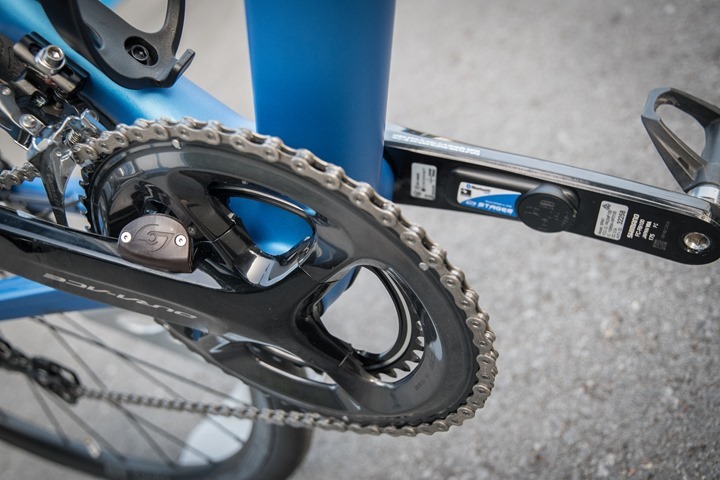
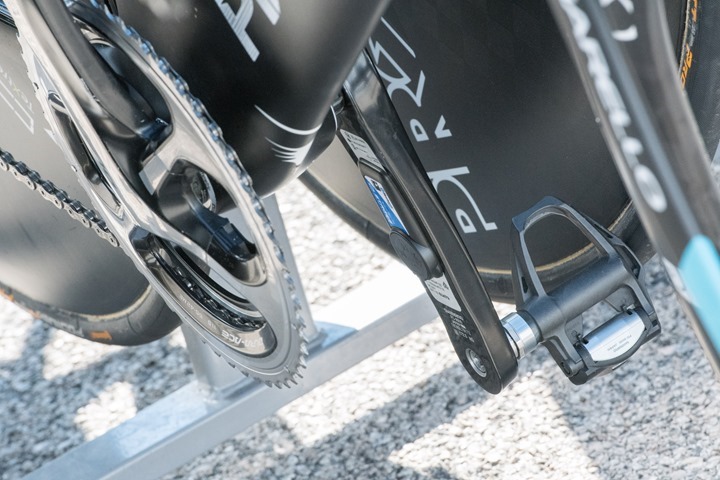



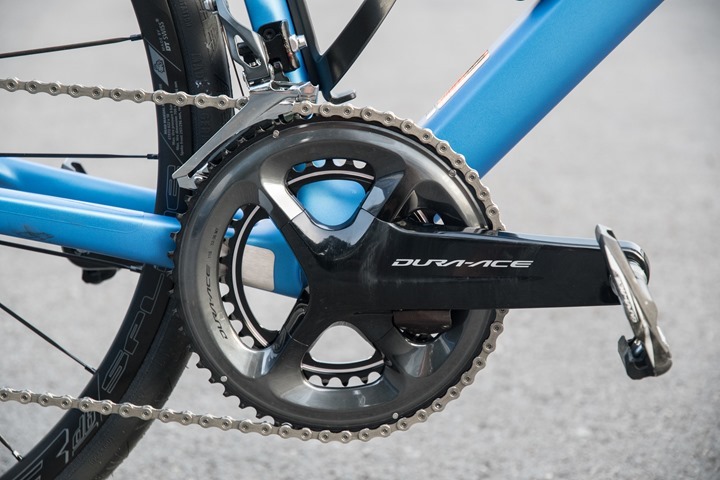
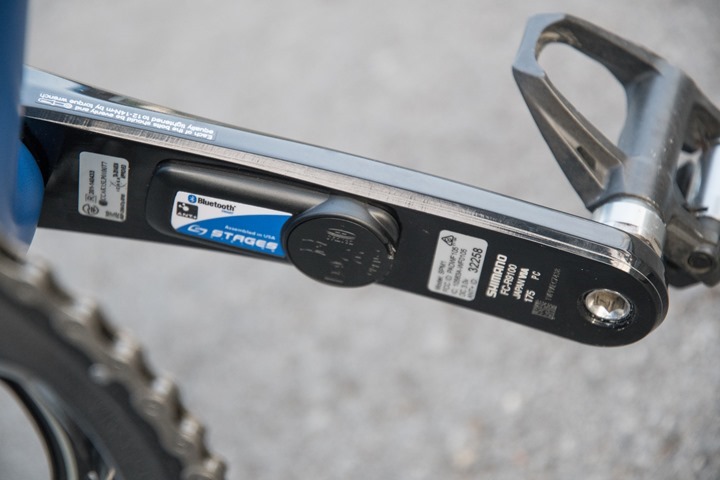
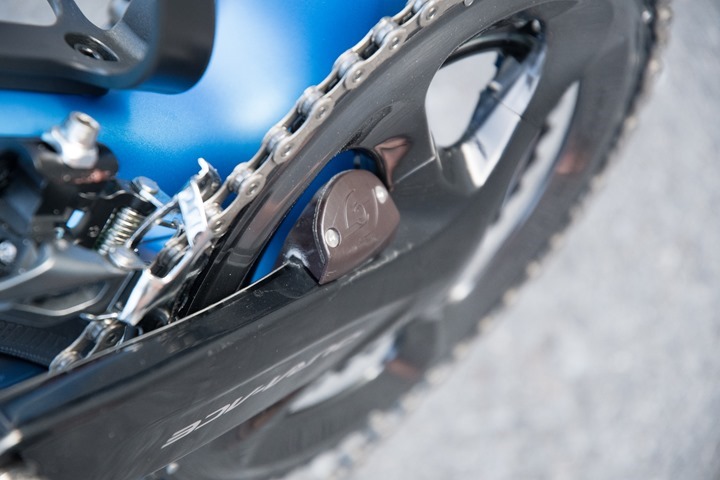
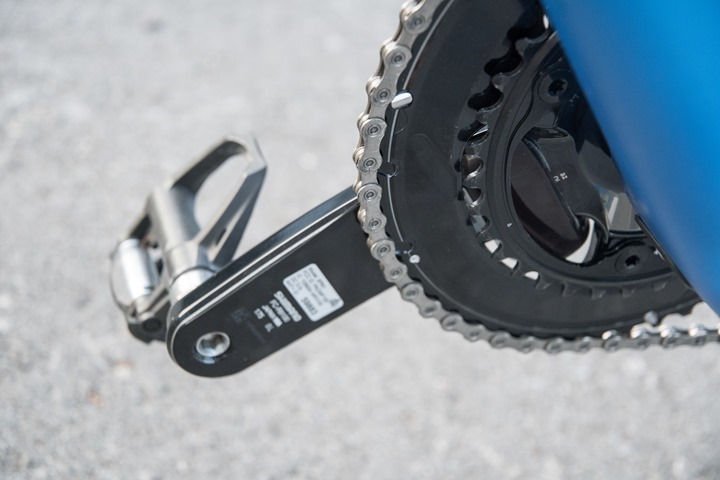
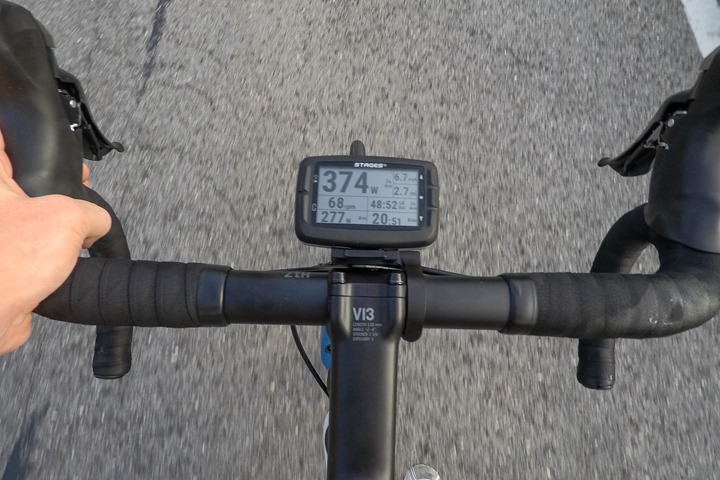



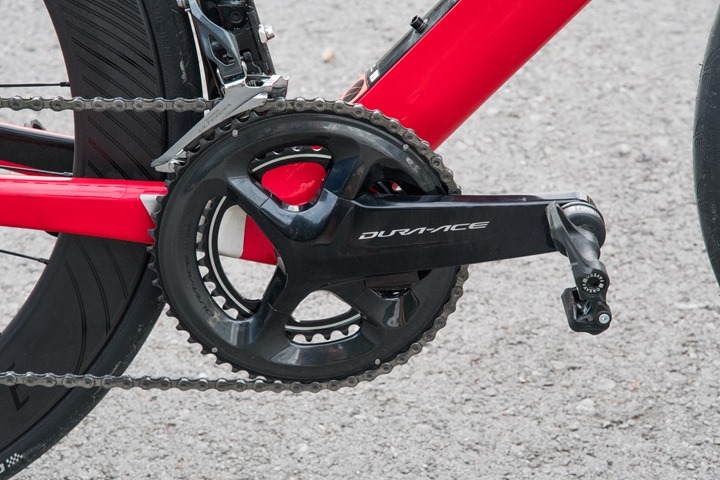


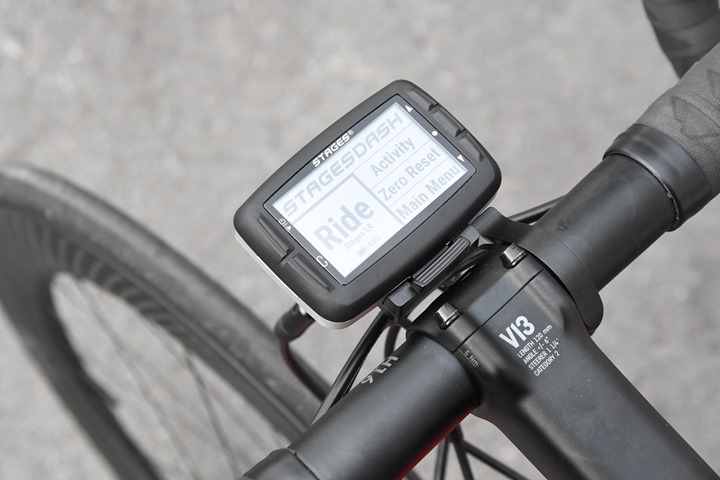

![clip_image001[5] clip_image001[5]](https://media.dcrainmaker.com/images/2017/08/clip_image0015_thumb.jpg)
![clip_image001[7] clip_image001[7]](https://media.dcrainmaker.com/images/2017/08/clip_image0017_thumb.jpg)

![clip_image002[5] clip_image002[5]](https://media.dcrainmaker.com/images/2017/08/clip_image0025_thumb.gif)
![clip_image002[7] clip_image002[7]](https://media.dcrainmaker.com/images/2017/08/clip_image0027_thumb.gif)
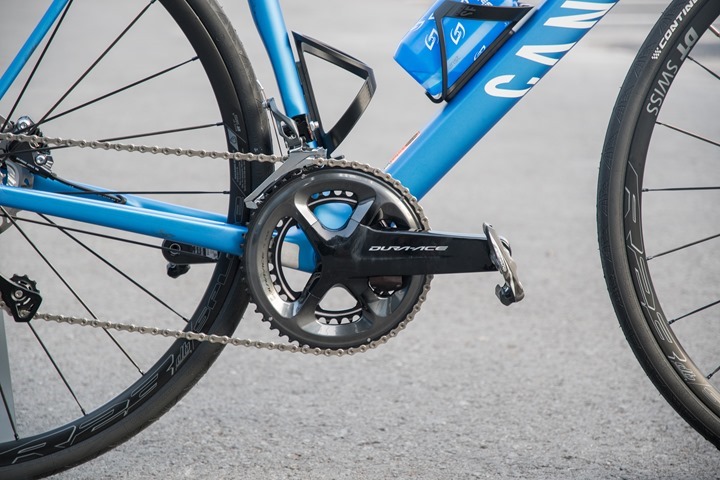



















I’d be interested to see if one can purchase the driveside as an upgrade to an existing 9100 single sided unit.
Hi Kellen, We are working to consider this solution, however, the logistics of sourcing materials (cranks) and production have prevented us from launching with this option. This may be an option at some point in 2018, but we cannot promise a date yet.
Surely if you are going to continue supplying left only as an option, which I’d assume you will as your rivals do, you will have right cranks surplus to requirements?
Thanks Matt- appreciate the update. With proof of purchase, I wonder if you might consider a swap out (send in my full crank) and a bit of a discount discount on an LR? …. could perhaps use the returned 9100 arms refurbished, warranty, blemish?…. and have full cranksets to boot…. just throwing it out there ;) – it’s something that I would take advantage of on my end if it were an option.
This is what I’d really like to do too.
Idle curiosity (because I don’t own one, but some of my friends do) – will there be an upgrade unit for those who have the left hand crank and want to add in the right side down the road?
As above. Will there be a R only option for people who ride 105?
As should be expected we will do our best to trickle down our technology to additional component families and manufacturers. I can not offer a date for a 105 version at this time, though.
you highlight a good point about how imbalances shift as you progress towards FTP. Like you and the rider in the data my imbalance fades away as I near FTP.
Yet many of us might not realise or know how that change materialises and try to correct our imbalances at lower power levels.
After years of analysing my imbalance angst, I have decided that I am equally rubbish as I approach FTP and that somehow I have trained my left hand side better whilst pootling along. ;-)
Maybe ‘ignorance is bliss’ and we should all use one sided or total power solutions ;-)
I’d also be most interested if there are any plans of offering an upgrade unit for those who are already on the left-side power meter. Would be a huge argument to get in now and upgrade later.
Geez, stages having drop out issues and on a brand spanking new unit, never would have thought that!
I think I’ve seen this design before somewhere
I’ve been having some drop out issues on my Stage in the last months, never knew what caused it!
Have Stages been able to do anything on their side to boost the strength of their ANT+ signal on this new system to improve how it works the Fenix 5 & 5S? I know it’s a Garmin side issue but Stages told me they hoped to improve signal strength in future products vs. their current solution. Thanks.
I read a story recently on cyclingnews.com where Team Sky has gone back to Edge 510 and 810 units in order to resolve their power meter connectivity issues. Definitely seems like a Garmin problem.
I think Stages are as much to blame as Garmin for the fenix 5 connectivity issues. Yes, the antenna implementation in the f5 is poor, but so is the signal output from the Stages PM. Other similar PMs such as the 4iiii Precision work fine with the f5. Indeed, Google shows that Stages PMs have a reputation for connectivity issues with all sorts of (non-Garmin) head units that seem to be related to poor signal strength.
So, whilst I’m certainly not going to blame Stages for Garmin’s design flaws, I wouldn’t consider this or any other Stages PM until I was convinced that they’d upped their signal output to be consistent with other PMs on the market. Once bitten, twice shy.
“The total claimed accuracy of the system is +/- 2%, which is actually the cumulative total of each leg’s claimed accuracy being +/- 1%. Their specific claim was done at 100w @ 90 RPM.”
Can you elaborate on this Ray.
Are they saying they have NO accuracy claims beyond this tiny sample? A few recent articles came out really crapping on stages for accuracy in “real world” conditions….
Anecdotally, I’ve ridden stages since early 2015, 35,000 miles, and haven’t had accuracy concerns in the real world. Have had the occasional – but very rare – bs level spike for a second or two – but seems to perform very well overall. Had to warranty the first gen units for battery door issues, but now 3 second gen units on multiple bikes and I’ve been pleased.
I think it’s important when looking at Stages (prior to today) accuracy to understand what accuracy means.
In that case they are talking ‘measured’ accuracy. And it’s actually true – their measured accuracy is generally fine. But that’s of the left leg, and not of the entire system (both legs). As such accuracy of the left leg doubled will indeed vary quite a bit. I’m not aware of anyone doing leg-split accuracy testing (aside from me), mostly becaues it’s kinda a pain in the ass to do. It’s one feature I had added to the DCR Analyzer purely to solve this problem.
But moving to a dual-leg system, that resolves that for Stages. Of course, like any power meter that can dive into other accuracy issues (some of which may have been seen on these rides).
Ray, have you quantified single-side accuracy loss on your rides? Realize it is situational, would be interested in a range of accuracy losses in various scenarios. In other words, do I need to convince my wife that I need both a Direto and a power meter upgrade? ;-)
Definitely, for me it’s actually quite solid that I don’t work well with a single sided power meter. In fact, check out the graph above from my rides that really tells the story of how much I shift power depending on power intensity/wattage.
Stages single leg has two “inaccuracies”
– 2% measurement error for the left leg. So, left leg outputs 50w, stages measures 49 to 51. I’m sure sure if stages single leg is 1 or 2%
– 50/50 bilateral output assumption.
EX1 – If Left Leg (LL) outputs 50w and Right Leg (RL) outputs 50w then stages will show 98 to 102 watts for true output of 100w. 2% error
EX2 – If Left Leg (LL) outputs 45w and Right Leg (RL) outputs 55w then stages will show 88.2w to 91.8w watts for true output of 100w. (( 45 * 0.98 * 2)) = 88.2 (( 45 * 1.02 * 2)) = 91.8. Total error ~9%
EX3 – If Left Leg (LL) outputs 55w and Right Leg (RL) outputs 45w then stages will show 107.8w to 112.2w watts for true output of 100w. (( 55 * 0.98 * 2)) = 107.8 (( 55 * 1.02 * 2)) = 112.2. Total error ~10%
Stages dual leg has two “inaccuracies” also.
– 1% measurement error for the left leg.
– 1% measurement error for the right leg.
– No 50/50 bilateral assumption made.
EX1 – If Left Leg (LL) outputs 50w and Right Leg (RL) outputs 50w then stages can show the following scenarios depending on how the left and right leg errors combine:
– LL 49w, RL 49w – 98w total (2% error)
– LL 49w, RL 51w – 100w total (0% error, due to error cancellation by luck)
– LL 51w, RL 49w – 100w total (0% error, due to error cancellation by luck)
– LL 51w, RL 51w – 102w total (2% error)
Need to correct error in the above post because 1% + 1% does not equal 2% total error and math error that 1% of 50 is not 1.
Stages dual leg has two “inaccuracies” also.
– 1% measurement error for the left leg.
– 1% measurement error for the right leg.
– No 50/50 bilateral assumption made.
EX1 – If Left Leg (LL) outputs 50w and Right Leg (RL) outputs 50w then stages can show the following scenarios depending on how the left and right leg errors combine:
– LL 49.5w, RL 49.5w – 99w total (1% error)
– LL 49w, RL 51w – 100w total (0% error, due to error cancellation by luck)
– LL 51w, RL 49w – 100w total (0% error, due to error cancellation by luck)
– LL 50.5w, RL 50.5w – 101w total (1% error)
I see your autocorrect got you – it’s Ian Stannard, not Standard.
Damn you autocorrect!
Thanks!
On one hand the pricing is ouch, on the other hand a full power meter that only adds 30g has a certain appeal. Interested to see the full review
In your words, “Though, as reality would have it, I seem to be a lightning rod for undesired technical events.”.
Perhaps we could open a service to s/w & h/w vendors (kidding). For 30+ years, I seem to have provided this service to vendors ranging from Garmin (who isn’t?), to Oracle. I wish I had a dollar for the number of times I use a product and not find a bug, and I mean substantial, within the first ~30 minutes of using.
I love my job :)
I keep holding out hope that Shimano will release their DA power meter soon, I heard mid-Sept but now it seems it’s being pushed off yet again to November 2017. I’ve had a good experience with my Stages power meter so far, but I do see quite a bit of discrepancy at power levels lower than FTP compared to my Kickr – which I’m attributing to leg imbalance. I want to move to a dual-sided meter mainly to accurately track TSS since I spend a lot of time outdoors riding below FTP. Have you heard anything about the Shimano meter?
P.S. Hey Ray, we rode together east of Denver a little while back.
Yeah, I was told I’d have a unit shipped to me in mid-September, but I haven’t heard in a month or so about that. I’ll see the guys this week, so will be able to poke in on that.
Benchmarking against the Assiomas rather than your usual P1s? Foreshadowing a good review of the Assioma pedals, are we?
I see approximately zero issues with the Assioma pedals. Really solid.
Another person interested in if there’s an upgrade plan available or something similar to what Pioneer offers.
ditto for me on that
Me too!
Every outlet is mum on it…… probably because they haven’t decided, OR the answer is ‘no’ and they don’t want that fact to overshadow the LR release announcement.
Or…more likely is that all of the press either spent the day riding 80 miles and is finally getting a chance to breath, or that if they did spend the day riding they spent the day doing other press events/writing/etc… Eurobike is packed, and so it’s a bit of rushing to do one thing to the next and eventually getting around to eating (it’s 9:15PM now, I’m finally eating for the first time today).
Keep in mind with Pioneer, they were installing on a wider variety of cranksets, and they were installing on *your* crankset. With Stages, they’re use case here is that you had bought one of the two compatible left only crank arms, of which even then things are tight since only one of those crank arms is actually shipping.
Perhaps I should clarify…. I meant ‘mum’ as in, not a single release story mentioned or speculated or dropped a “it remains to be seen whether or not…” I wasn’t implying you weren’t open to asking or were somehow towing a party line here (if that’s how it read, Ray sorry, your pieces never read like Peloton ;-). That’s all…. I’ll reserve comment on riding 80 miles before/after/around work tho.
“Another person interested in if there’s an upgrade plan available or something similar to what Pioneer offers.”
would love to see this….
There is a third reason for using a dual-sided (left-and-right) power-meter not mentioned here, but very important for data-savvy users of WKO4: The modelling in WKO4 needs good data to work well and a one-sided meter can skew the model by inflating PMAX. Another issue with one-sided Stages that I’ve seen is an over-abundance of spiked data. While this is not a big deal for many users, it does pose a problem for those individuals using some of the more advanced analytics of WKO4. Spiked data = garbage analytics (GIGO). Sure, WKO4 allows users to clean bad data, but Stages need to step-up and deliver products that are less prone to power- spikes.
Also important for Best Bike Splits too.
I’m hoping to use Best Bike Split for my 1st Ironman in August. Currently doing indoor training on a Computrainer and using TrainerRoad. The plan is to use BBS’s feature of giving power targets for each part of the course, displayed either on my Garmin 800 or 935. To keep cost down I 1st looked at the PowerPod, but with a couple of hard climbs on the course I anticipate riding those up on the wings, rather than being in aero. But I’m concerned the change in position would throw off the wattage from the PowerPod. I can purchase the Stages L/R for $1250 Cdn. or Stages Ultegra (gen 2) Left, on sale for $525.
What would be your recommendation for a power meter to get the most out of the Best Bike Split feature?
I would go with the Stages Dual LR rather than a Stages Left only. Since you are training for a IronMan you might as well benefit from your time and effort with the newest technology and most accurate from Stages. I have a Stages Left only (Gen 1) and have been happy with it for over two years. However, I will order the Stages Dual LR soon to install on my second bike which has DuraAce Di2. I also train indoors with TrainerRoad and a Wahoo KickR 17 model.
Its too late, Stages.
Im an owner of 2 Stages 1st Gen powermeters. Both have water ingress issue. Reliability is an issue. Its hard to convince myself to buy from Stages again.
Quarq and Favero has been my go to power meters now.
Lukman- i had the same w 2 first/gen units, but were replaced w the updated 2nd-gen under warranty and those (now 3 units as I changed geoupsets along the way) have been solid and legitimately waterproof (riding nearly submerged twice, and in the rain constantly). Bagging on Stages is trendy, and I wasn’t happy in the least to start w the first gen versions, but honestly I’ve been quite please ever since.
I’m struggling to see how these are going to compete with options like the Assioma pedals that are accurate, true L/R, much cheaper, can be transferred from bike to bike simply and are groupset agnostic.
Someone may have different pedal preferences for example, that’s one reason. Every power meter has pros and cons.
I would like to see a comparison between left only and the new product in term of accuracy.
What kind of bottom bracket does the unit require? Will this finally be a unit that fits my Shimano pressfit BB ? (Riding an Ultegra 6800 DI2)
“I seem to be a lightning rod for undesired technical events.”
So you’re saying that in a one-on-one situation Stages still can’t provide you with a reliable unit?! Given the reliability issues of the original models and the massive consumer retail return rate, it doesn’t exactly inspire confidence.
Sometimes shit happens. Just like that. Fwiw these are technically still pre-prod units.
I’m just curious if they are making progress on their connectivity issues. I always seem to have issues with the power dropping away to 0 when I’m right in the middle of some set of intervals. So it’s an ok power meter when you can get one of their clearance or slightly blemished models for $400-$500, but I sure wouldn’t want to hand over $1000+ given the problems I’ve had with reliability.
Hey Ray and Matt,
What’s the current state of the art for shorter-interval recording? Somewhere I read that Stages can be fastest on the market with up to 60hz recording when a Dash is paired with a Stages PM. For those of us who are deeply disturbed data nerds, I’d be very curious to hear where that is at.
Enjoy Friedrichshafen!
Ryan
It’s not there yet. I asked about it, and while it is still on the roadmap – it doesn’t sound near-term.
Hello, I got a question about the Stages Dash. Is there a idea when the GPS navigation is comming out? I was told it would come out with Eurobike. I see now they are only adding some workout/display/LINK changes in upcomming firmwares.
I really mis the navigation option, comming from a Wahoo Elemnt…
It doesn’t sound like that’s near-term at this point.
Thanks! I’ll continue to compare to my PowerTap and test leg balance on a gym Wattbike for now then!
Hi Ray, great review, seems like the LR would be a great option for folks (like me) building up a new bike and eyeing the new Ultegra groupset lowering the cost of dual sided power to about $200 over single sided. That’s a value proposition that’s tough to pass up even if I’m not totally convinced I need it.
Is there any hope for those of us who us a Garmin triathlon watch as a head unit to have solid connectivity with stages? My 910xt and my Fenix 5 are horrendously unreliable. Some acknowledgement that one or the other party is working on a solution would at least be a start.
Hard to say. Certainly not from the Garmin side unfortunately, based on the way the 5/5S connectivity went.
Hi Ray,
What would be your best guess of when the trickle down to 6800 will be for the crank-only option? I’d bet the majority of current Stages owners are on Ultegra.
With the single side version, pedaling with one leg only (even if it was the left one) resulted with no reading. Stages support confirmed this is how it should work.
Is it supported now?
thanks for the detailed review
How to elliptical chain rings affect power meter performance and accuracy?
Just as a heads up, Stages LR is now available to pre-order. Clever Training has it listed here: link to clevertraining.com
Usual 10% back in points applies with the VIP program, plus free shipping when it ships in December. It sounds like I’ll have a test unit in about 3 weeks to start putting through its paces.
When I talked to Stages last week, they’re now hoping to ship LR units in January.
Hi there.
I have bought the new Ultegra LR. The battery is no problem. But I am experiencing a lot of drop-outs, and by checking the .fit file I can see that there is only a reception of 75%. T
It is exactly the same setup on the bike as with my “old” gen2 left Stages Power Meter, but there is no drop-outs and the reception here is 95%.
Anyone else expericing this problem?
What head unit? I was having dropouts on an Edge 520 (two different ones), but since switching to an Edge 1030 and 1000, no dropouts.
Hi.
I an using Garmin Edge 520. But why would the new PM have drop-outs when the old PM is working flawless? If this is the case, there should be a warning before buying /:
Yeah, I haven’t figured it out yet either. It’s something I stumbled into about a week or so ago in testing, and it’s what they suggested. Thus, I tried it, and it worked thus far.
But figuring out why the Edge 520 specifically is challenging is on my to-do list. It’s one of the most popular bike computers out there, and I haven’t had any issues with *any* other power meter on the market with them (and I’ve tested every other power meter on the market with it). :-/
I have opened a support ticket at Stages Support to get this fixed. I cant believe that what I thougt would be an upgrade from my left side Stages, now instead is an downgrade because of low reception and drop-outs!
They will have me sending the unit back for testing, but what do I do if they do not find any errors! I aa reluctant to buy a new head unit for the sake of a Stages power meter!
To others reading this, be aware if you have an Edge 520!
I have a similar situation. Currently I have a Stages Left Gen 1 PM with an older Edge 520. The connectivity has worked fine for two years. I am waiting to see the full review from dcrainmaker before making a purchase of the Stages Dual LR PM for my newer, second bike – Trek Emonda with DuraAce 9100 Di2.
I am curious to hear what version of firmware you have installed with your 520. Mine is currently at 10.2 but it is having difficulty loading newer firmware (10.5) so Garmin is shipping me a refurbished 520 to exchange. I wonder if the firmware level would make a difference?
My Garmin has the latest firmware 12.50, and no issues what so ever with my 2 old gen2 Stages power meters. I am waiting for stages to test my Dual PM, and will write here when I hear from them!
I took delivery of a Stages LR yesterday and did a quick workout in Zwift today, (paired to the Stages LR by bluetooth in iOS) and recorded the ANT+ signal from the Stages LR with both a Garmin Edge 810 and a Garmin Forerunner 935 watch, both of which were located on a table at the front of the bike, with the iPad.
I also recorded the workout with PerfPro on a Windows 10 tablet. On PerfPro, I didn’t see any power/cadence dropouts from the Stages LR (using the Garmin USB ANT stick).
I did notice once or twice that I got a dropout when I grabbed my phone to look something up on line or cast YouTube to a Roku stick, and remembered that I have read about issues with ANT+ and wifi interference. Checking my router, it was set on “Auto” and currently on channel 10 for the 2.4ghz channel (which I now realize was also likely interfering with my Zigbee network on Channel 20). A search online showed that ANT+ uses similar frequencies to 2.4Ghz Wifi on channels 7-11?
I switched my 2.4Ghz wifi to Channel 1 manually, and will have to continue testing.
On my Garmin 935, there were quite a few dropouts and fewer but still present dropouts on my 810 recording. The average power from the 810 file was 213w while the 935 was only 201w for the 30 minute workout.
I haven’t contacted Stages Tech Support yet, but will probably collect a few more files from various devices first now that I’ve changed my 2.4Ghz Wifi network to use channel 1 instead of 10.
My testing environment/PainCave is pretty noisy with electromagnetic interference, I would guess. (Kickr, Tacx Vortex Smart, Stages LR, multiple speed/cadence sensors, HRM, a phone, two tablets, TV and Roku, wifi security cameras in the area, Fan, etc. )
BTW, I was having issues with the Android StagesPower app, while initially making sure that my new Stages LR was working correctly. I believe they came already paired from the factory, but it would not calibrate on the L on command. I switched to the iOS app, and after a few attempts, unpaired and repaired the left and right sides, and then the iOS app wouldn’t do a zero-calibration on the L either, but sending the command from my Garmin 935 seemed to work. Still need more testing on that too.
Just to provide updates, like Thomas, on my experience. Did another ride today on the Kickr, and recorded the Stages ANT+ power meter signal with a Forerunner 935 watch, Edge 810, and PerfPro on a Windows tablet with Garmin USB ANT+ stick. At the same time, was riding a workout on Zwift, with it controlling the kickr via bluetooth, but reading Power/Cadence from the Stages LR.
New, this time, from the last, I had locked my 2.4Ghz WiFi to channel 1, and I did the first 15 minutes of the workout without using my fan, which was sitting on the corner of my table about 12-18″ away from the recording devices. On Garmin Connect Mobile, the graph showed no dropouts on the 935 before I turned on the fan about 20 minutes in. But there are some dropouts visible on the graph in Garmin Connect on the web.
Overall, I counted 15 dropouts during the 34 minute bike on the Garmin 935, and 20 dropouts on the Garmin 810 during the same 34 minutes. The average power for the workout was very close, at 202 and 203W respectively. The dropouts were more frequent when the fan was on, including one extended dropout that I noticed on my 935 of >5 seconds, and when I turned off the fan at that point, the power reading showed up again.
I had an error that didn’t record the workout in PerfPro for comparison with the Kickr. The graphs on PerfPro did not show any dropouts during/after the ride, but I suspect they may be doing some smoothing/averaging (even though the PerfPro reception numbers in Ant+ setup were showing 100%). I think I figured out the PerfPro error on saving the workout, so next time I will get those files.
If anyone else wants to take a look at the files, let me know.
(Strangely/Thankfully, I have not experienced dropouts that I can tell, with Zwift ingesting the bluetooth Power meter output from the Stages LR.)
Hi Ray,
I recently bought a Stages Ultegra L-only and have been experiencing dropouts on my Edge 520. I see you’ve had the same problems. Any suggestions to try from your experience apart from those recommended on various forums – remove sensors that aren’t in use, switch off bluetooth, enter ANT+ Id manually. Frankly, I can’t see why these would improve the situation but will try them irrespective in the hope of not losing data.
Thanks,
Adrian.
I wish I had any better ideas, but honestly there’s not much else to do.
Stages just semi-quietly rolled out a new generation of units over the past couple weeks which boosts the signal more, as well as some other minor tweaks like a status LED. I’ve got a few units in now to do some signal testing on to see what things look like.
FWIW, I moved the Edge 520 on the out-front handlebar mount to the left of the stem so that it has direct line of sight to the left crank arm. For me that has vastly reduced the drop outs. Looks a little goofy being 10 cm off centre but at least I have reliable data now.
Adrian.
Stages is a bit ambiguous about whether the Stages R crank can be paired with older Stages left-side power meters or only compatible with the newer Stages L SKUs. I have a Stages Gen2 Ultegra 6800 crankarm…can it be paired with a Stages R R8000 crank/spindle?
I’ve been looking for the answer to the same question. Yeah, you’re right that Stages isn’t explicit on their site/FAQ, but I did come across this comment from their VP:
“Stages Power R is yet another option, providing an additional frame-compatibility solution and the ability to pair any new or existing Gen 2 Stages Power left-only meters to a LR system.”
Source: link to bicycleretailer.com
Seems to be working, paired my 2nd generation 5800 left with 3rd generation R8000 right in the app. Haven’t used and won’t use it like this, but appears to be working.
Awesome – thanks for trying it out!
As a follow up:
Stages have been testing my powermeter with 2 different Garmin Edge 520, supposedly with good reception on both. Much different from my testing, where the old GEN2 had perfect reception. They are claiming my Garmin has the error!
So they just want to send back the PM to me, with the message “find no errors”. But I do not want to be a testing tool for stages and use my training with power dropouts, so I have asked for my money back.
So, be aware, the new PM might have the same reception error as the old one, despite their claim of 6x radio signal.
I am awaiting the review from DC Rainmaker.
I will not put more money in their product and will not recommend any doing this.
Did they happen to comment on battery life with this 6x signal boost? I would expect that it would have a notable impact.
At this point I’m leaning more towards Pioneer just because of the headache potential.
There is a 20% promotion on Stage power meters at an online German power meter shop. At this price it is quite tempting, but as a Garmin Edge 520 user, I thinks I will better hold off. Looking forward to Ray’s review.
I’ve been using the Stages LR for a bit of time now (the Ultegra version) and outside I didn’t notice any drop-outs (with an 1030). I’ve also used a G2 before (with the same 1030) and I didn’t have any issues. During this time I’ve noticed two very obvious problems:
– if I connected it via BT to the 1030 I would very rarely get 0W / 0 Cadence and instead it would seem to be stuck to a value and broadcast it until I would restart pedalling; this does not happen if the LR is connected via ANT+
– I would get a lot of drop-outs while using Zwift (I use the LR only for cadence and the Neo for power, but at the same time I also use the 1030 via ANT+ to track my “training load”)
Stages says that they’ve fixed both those issues in their latest release (1.1.8). As for accuracy, the values don’t match the Neo at all (the Neo is always higher by around 10-20W), but the graphs are usually very very similar. I’ve just got a Vector 3 out of curiosity and hopefully it won’t simply give me a 3rd set of values in between.
I’ve had a bit of time today, so I’ve tested my Stages LR + Edge 520, Vector 3 + Edge 1030 and Tacx Neo + iPad (link to analyze.dcrainmaker.com). I didn’t notice any dropouts for 1h20m (so I do think that they’ve fixed the issue I was seeing before). The Edge 520 + Stages LR also behaved very well and I didn’t have any drop outs and even if it’s just one test, my house is a horrible mess of interference (around 20 devices connected on WiFI on 2.4GHz, around 20 BT HomeKit sensors and a SonosNet).
Thanks for the update @Chisti. Where is your Edge 520 located on your bike? Stages support got back to me recommending to move it from an out-front mount to on the stem. Hard to see how 10cm can make a difference though! I actually have my Wahoo speed sensor on my rear hub and the Edge 520 can pick that signal up without any issues.
What has your experience been using the Edge 520/Stages combination on outside rides?
It was located on a chair, on my let side at around 80-90cm from the bike.
Thanks – sounds promising. Is it possible to see if there’s any difference on your next ride with the Edge 520 on an out-front mount?
I’ll give that a try as well and report back (Zwift run as well, as the UK weather is not great right now).
One weird thing with my Stages LR is that it doesn’t agree at all with the Vector 3 or the Neo. Power wise, the Stages reports the less of all 3 of them (by quite a lot – around 10% less), while Vector 3 reports marginally more than Neo (which would seem to indicate the Vector 3 and Neo are correct). Disregarding the power, the L/R balance is completely different. Where Stages says that I have a heavy bias towards my left leg (around 56% – 44% I have a rather badly damaged right knee, so that seemed correct to me), the Vector 3 says that I have a slight right leg bias (48% – 52%). I only installed the Vector 3 yesterday, so it might not have been “settled” yet (I did a few sprints before calibrating it and starting the Zwift test).
If you aren’t, do ensure your firmware is up to date.
For me, the 1.1.8 fixed both dropouts and the balance issues*.
*Technically, I had a pre-release version of 1.1.8 that fixed the balance issues 2.5 weeks ago, but the connectivity wasn’t fixed for me till latest firmware now. The balance issue was actually more because the right-side was showing low 1-3%.
The last test was done one 1.1.8. The balance might have improved a bit vs. the previous FW (before I think I was getting around 58%-42%), but the power is still quite low vs. the Neo and vs. the Vector 3s. For the last ride, if I take the left power from the Stages LR and double it I’d get an average number that’s quite close to what the Vector 3 gave me.
That’s odd. It’d be interesting to see what happens if you use the Stages mobile app, connect to both left and right sides, and then go into the tab to do a zero offset, and see how different they are. Same goes for the tab that shows both sides specs side by side.
The last time I’ve calibrated them (just before yesterday test) I actually looked at the values and I got 894 (left) and 893 (right).
Then I’m stumped. I’d reach out to Stages support and shoot them your findings (especially if you have three concurrent files, they’d love that).
From the DCR analyzer (awesome tool BTW), it seems like the left Vector 3 is quite similar to the Stages L, but the Stages R reads significantly lower than what the Vector 3 reads. It will be interesting to find out which one is right, if any :)
Yeah, that right leg looks precisely like the data I had prior to the late January firmware (which Stages confirmed as impacting right only).
I have the same issue on my new Stages LR with lower power values comparing to Neo. The latest firmware 1.2.0. Going to write to support
Has there been any word if Stages will be putting out Right side mountain cranks? (XT…)
Also, I see above that someone was able to pair the Ultegra 8000R with a 5800 series Left crank. I’ve got some 6800 ultegra left only cranks and was wondering how well this works with the new 8000 right side. -In terms of L/R balance readings.
Does the right side also works alone?
Yes, it does. It can be used as a RIGHT only power meter.
Too Bad. No LR power meter for Campagnolo and Sram users.
I have a Sram Force equipped road bike. So, I have to wait or it just won’t happen to me to upgrade my power meter until I buy a new groupset from Shimano.
Hi Ray, thanks for all the good articles and reviews. I wanted to ask you or anyone in the group if anyone knows if the LR pwoermeter can be split up and used as two separate power meters? I am considering buying a LR unit and split them over my two bikes with the same groups and have two bikes with a single side pwoermeter? Any thoughts if the arms can be used separately on two separate bikes?
Also do you know if there are any known issues with changing from a compact chain ring set to a standard or semi compact from the same groupset?
Thanks again.
Is there any way to work out power meter consistency over time? I am worried that my Stages Gen 3 L power meter is loosing power (same effort generates fewer watts). Is this even possible? The power meter was bought new in December and has only been used indoors. I have calibrated it before every use.
The concern arises because my ftp appears to have dropped 20 watts (using this same power meter) although I have been training regularly and for much longer than I have owned the power meter. It is not so much the numbers as the thought of owning a defect power meter that is causing agony though….
The only clue you might have is if there is a constant drift in the zero offset number over that period. Do you know if there is and is it within the suggested range? PM’s can “bed in” a bit but usually settle after a few uses and then zero offset should only really fluctuate much for temperature after that (unless you get moisture in it but then it should go out of range).
What you obviously cant do is go back in time and compare with another PM in the past but you could in theory do it now (won’t help for your consistency but maybe will help at least determine accuracy now which mentally gets you most of the way there!). Easiest way is to compare with a well calibrated trainer, preferably that someone else has already shown to be consistent with their on-bike PM too so you’re effectively getting a 3 PM comparison.
20 watts could presumably be 5-10% which indeed is a lot in PM consistency world but after the above this is an amount that could be off if you had one badly offset high test or even if you’re overtrained.
Good luck!
Thanks for taking the time to provide such a helpful response.
I agree that a calibrated PM is probably the best solution but unfortunately not readily at hand – for now I am stuck with one that is probably too low. Time on the road will show ?. If I can keep up with guys on my team, it won’t really matter what the numbers show, as long as there is not further drift.
I’m looking for a powermeter for my Argon 18 Dark Matter, which has turned out to be harder than I thought. I can’t buy a leftside only power meter since there is no clearance for this.
Since I am using a 42 t Wolf Thooth chainring, I’m worried that the boxes on this Stages R and on 4iiii right side powermeters, might interfere with the chain because of the smaller chainring. Do you think this will be an issue?
I am not super happy with my new Stages PM (See above) and would probably opt for a crank based PM today. But I have not checked reviews.
Doubt it – not sure how it could.
Could look at a Quarq also.